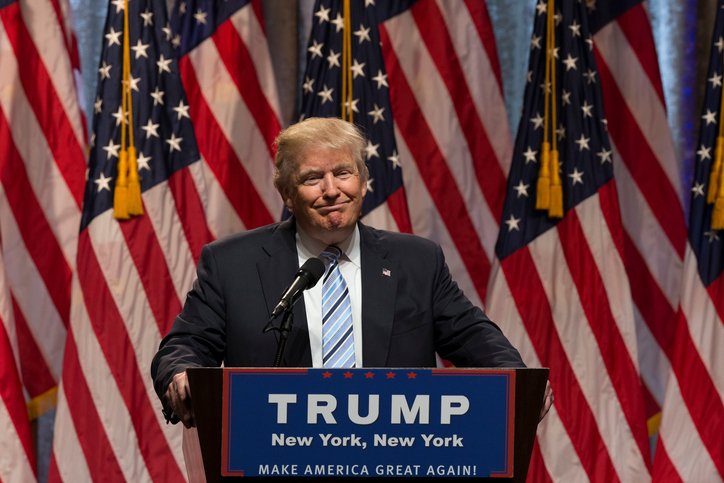Listen up! If you’re struggling to pay back your student loans, you’re going to want to read on.
According to a USA Today report, qualifying students now in public service jobs may be getting a little relief from their student loans.
More specifically, “thousands of U.S. student loan borrowers who work as teachers, police officers, nurses, or in other public service jobs may soon benefit from a $350 million one-time expansion of a federal program that could forgive their remaining debt,” USA Today reports.
President Trump recently signed a $3.1 trillion federal spending bill that includes a compromise detailing a “one-time reprieve for borrowers who feared they'd missed the chance to get out from under often-crippling student loan debt that makes it hard to buy a home, start a family, or pay day-to-day bills.”
Sen. Elizabeth Warren, D-Mass., who fought for the reprieve, stated in USA Today’s article that “I'm very glad that, for the first time, we got some money to help public servants unfairly trapped under a mountain of debt.” She also went on the remind Americans that the fight for a "permanent fix" to the estimated $1.4 trillion in U.S. student loan debt continues.
The program, created in 2007, was designed to assist student loan borrowers within public service jobs to get their remaining debt forgiven. They will qualify if they made 120 repayments or, roughly, a decade’s worth, under a qualifying repayment plan. One of the stipulations is that each repayment must be made in full and on time, but other qualifying factors apply.
• The borrowers must work full-time for a qualifying employer, such as a federal or local government agency, or an eligible non-profit organization.
• 120 (or about 10 years’ worth of) on-time and in full payments.
• Student borrowers must have taken out direct loans from the federal government. (Private loans and non-direct government loans don't qualify). That being said, borrowers may qualify if they consolidate their existing debt into direct loans.
• Borrowers must be enrolled in a qualifying repayment program. (Note: there are nine student loan repayment options, some of which qualify while others do not.)
According to the U.S. Department of Education, as of Feb. 28, slightly less than 13,000 unique applications had been received. Unfortunately, student loan borrowers are in the millions and many took out non-qualifying loans to pay for their studies. Tens of thousands of these borrowers are believed to have mistakenly enrolled in the wrong repayment program, which means they likely won’t qualify to benefit from the program. The budget deal we're referring to includes $350 million "to remain until expended" on a first-come, first-serve basis. This is in hopes to help student loan borrowers who discovered they are ineligible for debt forgiveness. USA Today also detailed that “The Department of Education must compare a borrower's most recent monthly repayment with the payment for the same month in the prior year. Those who were paying less than they would have in a qualified repayment program aren't eligible for loan forgiveness.” Additionally, “the compromise also earmarks $2.3 million for outreach efforts to borrowers who would have qualified for loan forgiveness but mistakenly chose or were misled into incorrect options.”
Qualifications for benefiting from the program:
• Student loan borrowers with careers in qualifying public service jobs.• 120 (or about 10 years’ worth of) on-time and in full payments.
• Student borrowers must have taken out direct loans from the federal government. (Private loans and non-direct government loans don't qualify). That being said, borrowers may qualify if they consolidate their existing debt into direct loans.
• Borrowers must be enrolled in a qualifying repayment program. (Note: there are nine student loan repayment options, some of which qualify while others do not.)
According to the U.S. Department of Education, as of Feb. 28, slightly less than 13,000 unique applications had been received. Unfortunately, student loan borrowers are in the millions and many took out non-qualifying loans to pay for their studies. Tens of thousands of these borrowers are believed to have mistakenly enrolled in the wrong repayment program, which means they likely won’t qualify to benefit from the program. The budget deal we're referring to includes $350 million "to remain until expended" on a first-come, first-serve basis. This is in hopes to help student loan borrowers who discovered they are ineligible for debt forgiveness. USA Today also detailed that “The Department of Education must compare a borrower's most recent monthly repayment with the payment for the same month in the prior year. Those who were paying less than they would have in a qualified repayment program aren't eligible for loan forgiveness.” Additionally, “the compromise also earmarks $2.3 million for outreach efforts to borrowers who would have qualified for loan forgiveness but mistakenly chose or were misled into incorrect options.”
